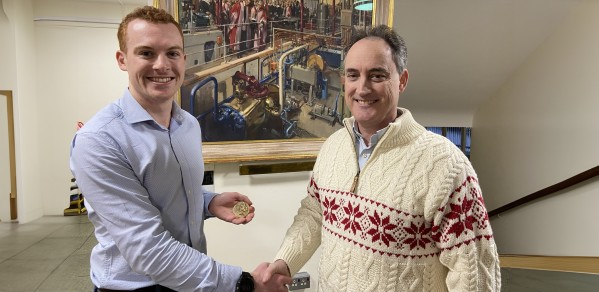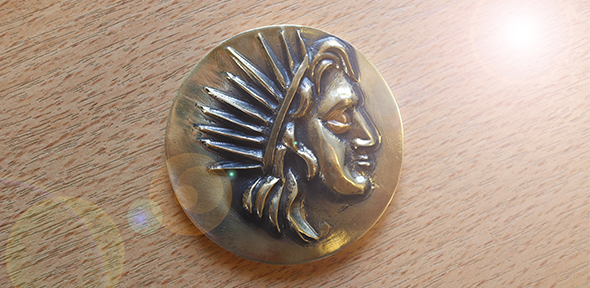
James Lazenby, a PhD student in the Energy, Fluids and Turbomachinery Division, has been announced the winner of the Department’s 2024 Helios Prize – awarded for research on sustainable energy and/or energy efficiency.
It is wonderful that the Department runs the Helios Prize competition to encourage graduate research in sustainable energy. Spending 3-4 years in a niche research area can sometimes feel insignificant, especially when urgent action is needed to curb the effects of climate change. This prize serves as a great source of motivation to continue working in this field.
James Lazenby - 2024 Helios Prize winner
The Helios Prize was launched in 2019 and is made possible thanks to a generous donation from Cambridge alumnus John Firth. John approached the Department specifically and asked that the prize be named after the Greek sun god Helios, because the world’s renewable energy is fundamentally driven by solar energy.
James explains his research below:
Nuclear power plants typically operate as baseload generators, producing a constant electricity output. In the paper we propose a method to integrate thermal energy storage with the steam cycle of nuclear plant (retrofit or new build). This allows the electrical power output of the plant to be flexed up and down whilst maintaining constant reactor power, thereby providing the equivalent of a large-scale electricity storage system.
This will hopefully facilitate the adoption of a load-following role for nuclear plant, which is currently fulfilled by gas-fired plant. The concept falls under the umbrella of ‘generation-integrated energy storage’, which exploits existing hardware required for generation to reduce storage costs, and benefits also from fewer energy transformations when compared to traditional ‘electricity-in-electricity-out’ forms of storage.
The novelty of the proposed storage system is that it integrates with the nuclear plant’s feedwater heating system and wet-steam turbine bleed flows. This allows electrical work to be efficiently stored in a sensible thermal storage medium. Thermodynamic analysis and modelling of the system with realistic assumptions indicate that when integrated with large nuclear plant (1.2 GWe output), the storage system will likely have:
- Discharge power of 120 MWe
- Energy storage capacity of 1-10 GWhe
- Electrical storage efficiency greater than 80%
These performance metrics are similar to existing pumped-hydro energy storage schemes, and greater than other proposed large-scale energy storage systems, such as compressed-air.
An important aspect of the system is that allowing the reactor to operate constantly at maximum output and instead flexing the power cycle with the storage system, mitigates nuclear financing issues – i.e., nuclear plant will not have to curtail during periods of excess wind and solar generation can instead push heat to storage. The stored energy can then be recovered when the electricity system is stressed during periods of low wind and solar generation.
James says: "It is wonderful that the Department runs the Helios Prize competition to encourage graduate research in sustainable energy. Spending 3-4 years in a niche research area can sometimes feel insignificant, especially when urgent action is needed to curb the effects of climate change. This prize serves as a great source of motivation to continue working in this field.
"I would like to thank my coauthors on the paper 'A feedheat-integrated energy storage system for nuclear-powered steam plant' Alex White (supervisor) and Eugene Shwageraus (advisor), for their invaluable support and advice throughout the project. It is an exciting time for me as I am nearing the completion of my PhD (viva early 2025) and am considering where I would like to focus my career in the energy industry. In the meantime, I am finalising detailed capital cost estimates and design trends of the system, which I hope will form the basis of a follow-up paper."
James was presented with prize money, along with a brass medal depicting the face of Helios. The medal was crafted by Alistair Ross, former Manager of Design and Technical Services at the Department of Engineering. He machined it on-site using a 3D pantograph and drew inspiration for the design from a Helios coin loaned to him by the Fitzwilliam Museum, believed to date from the 2nd to 1st century BC.


